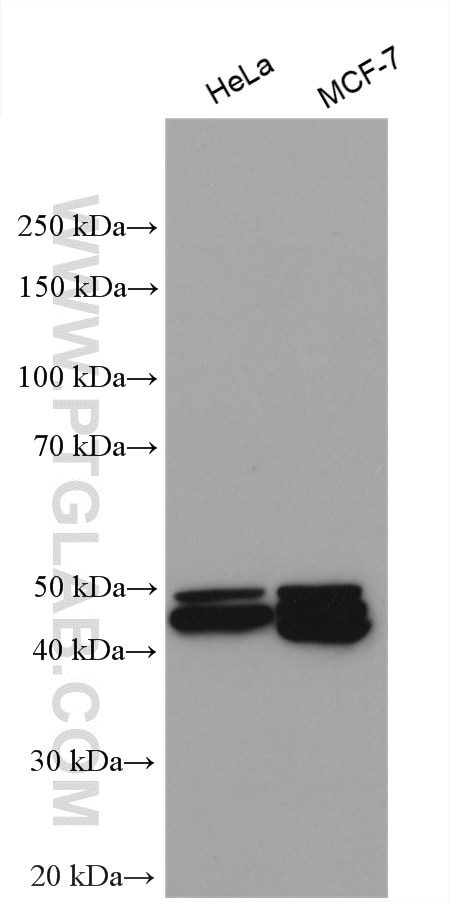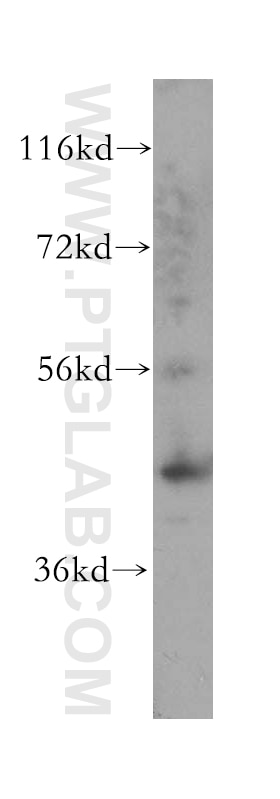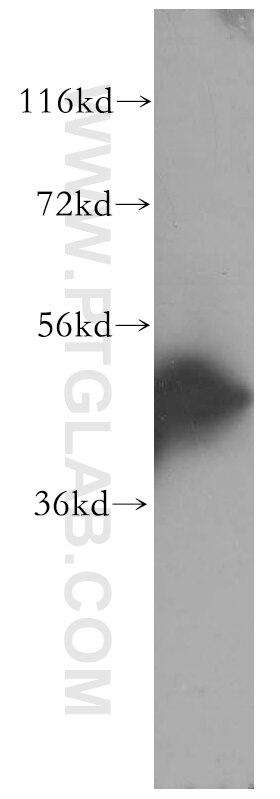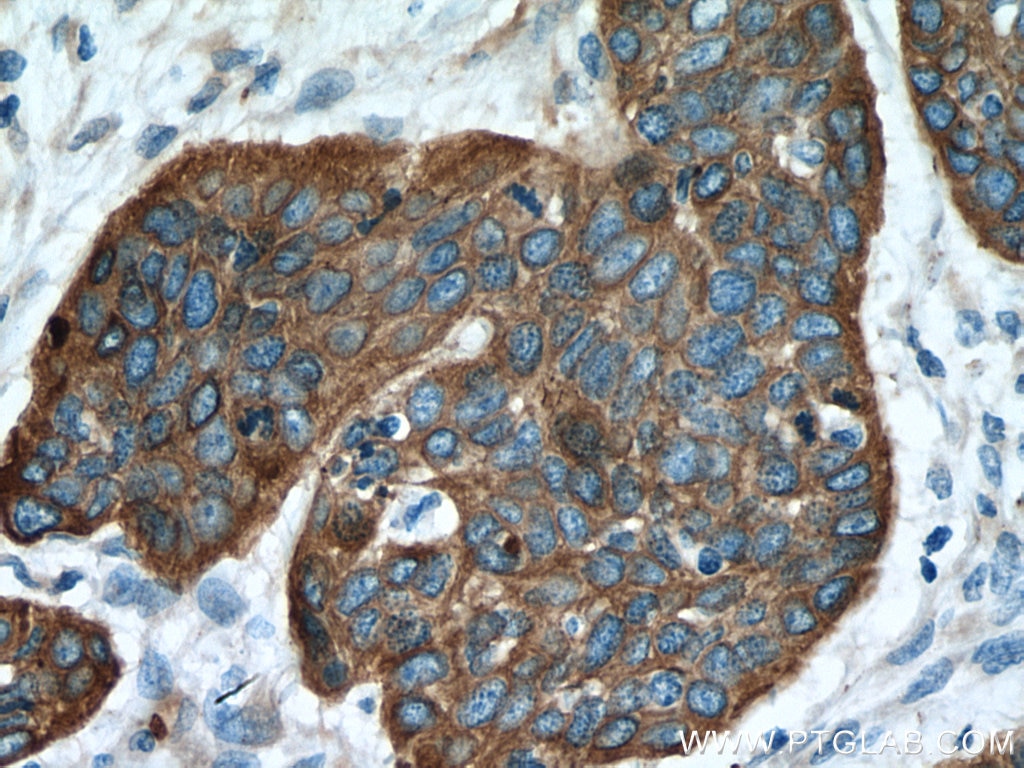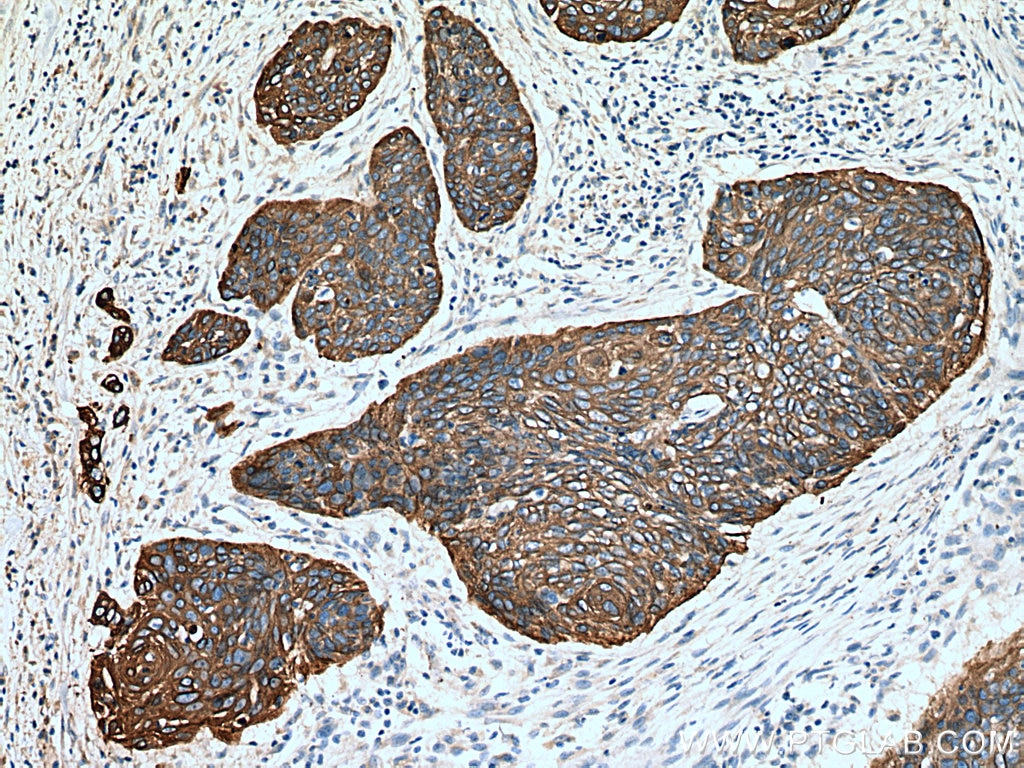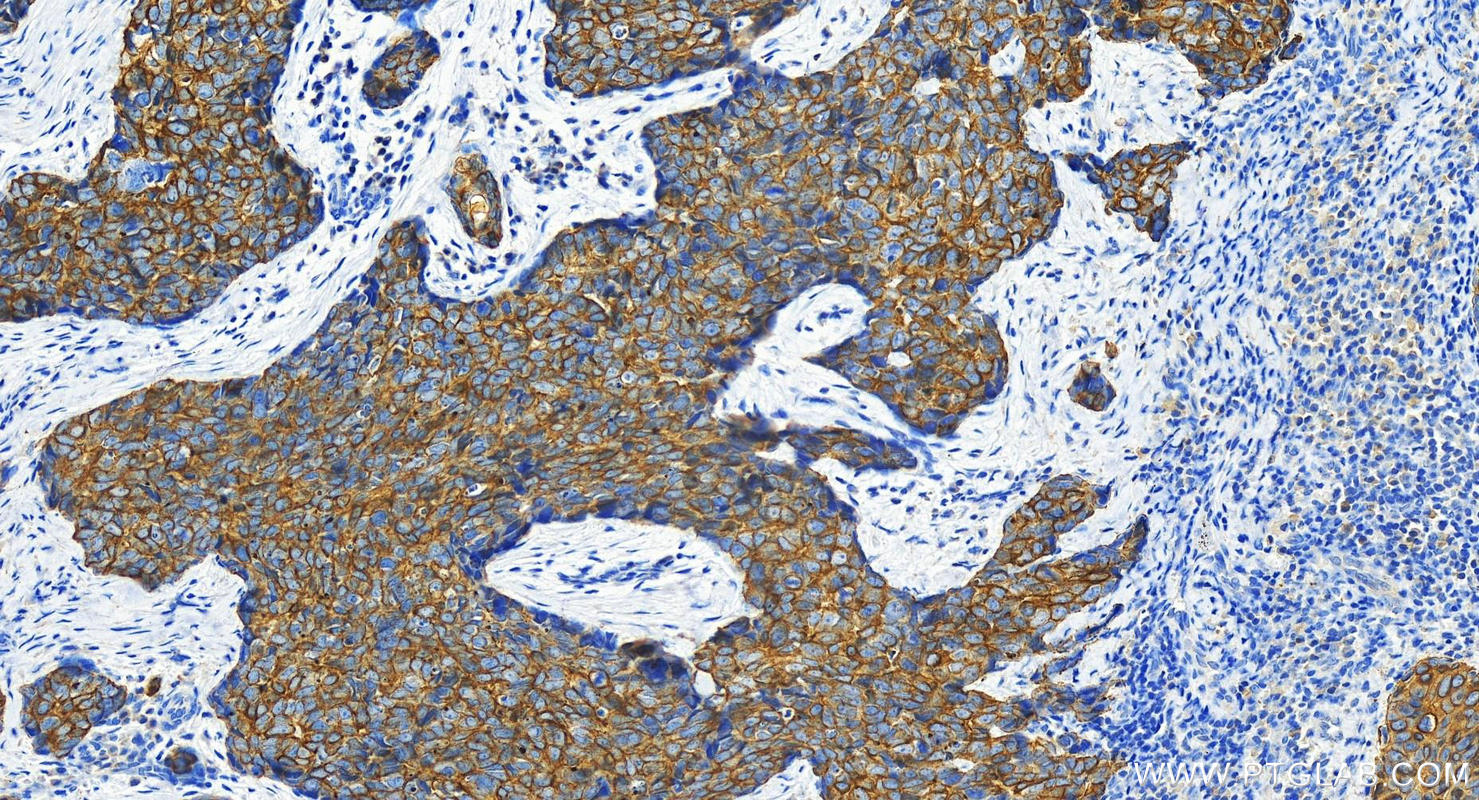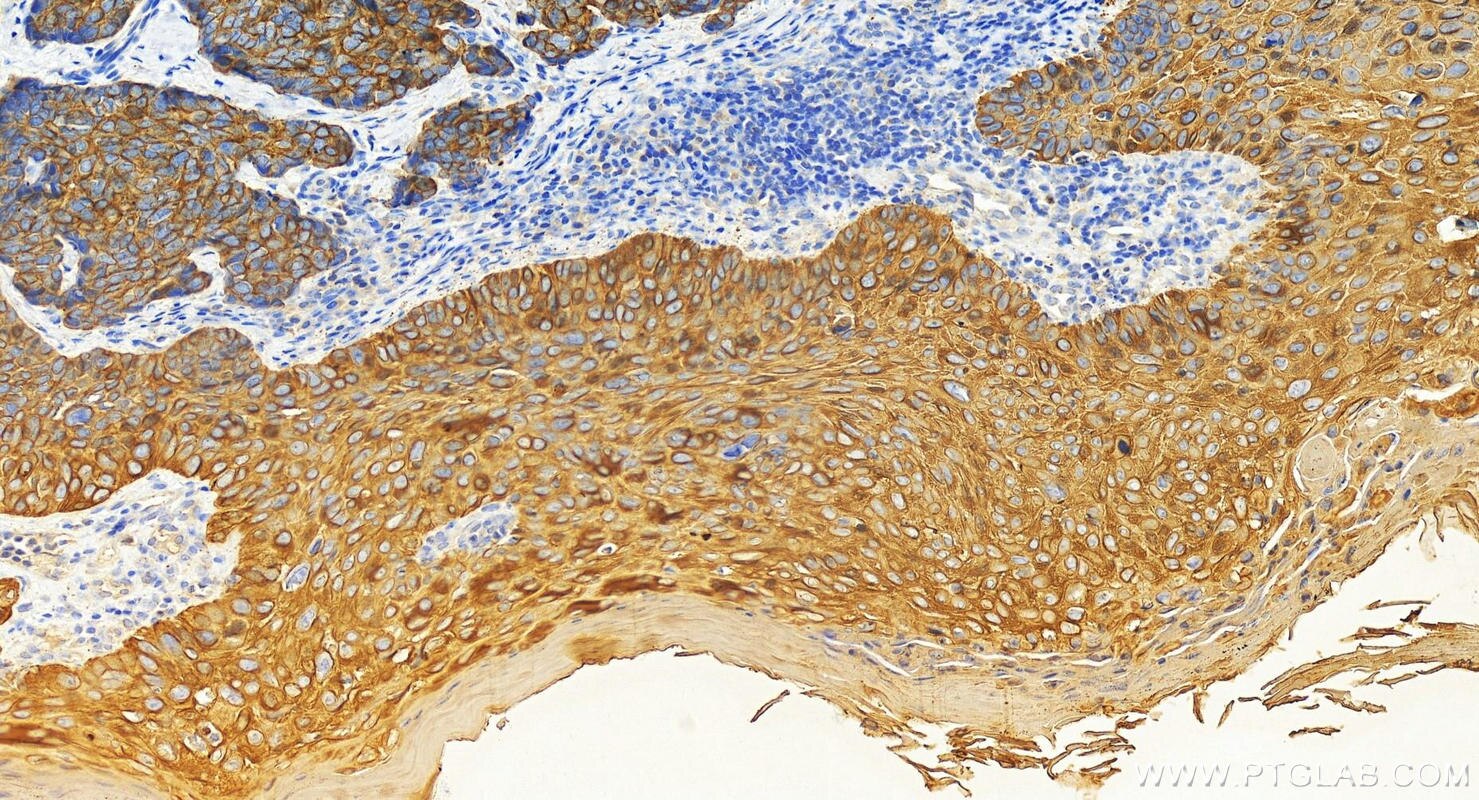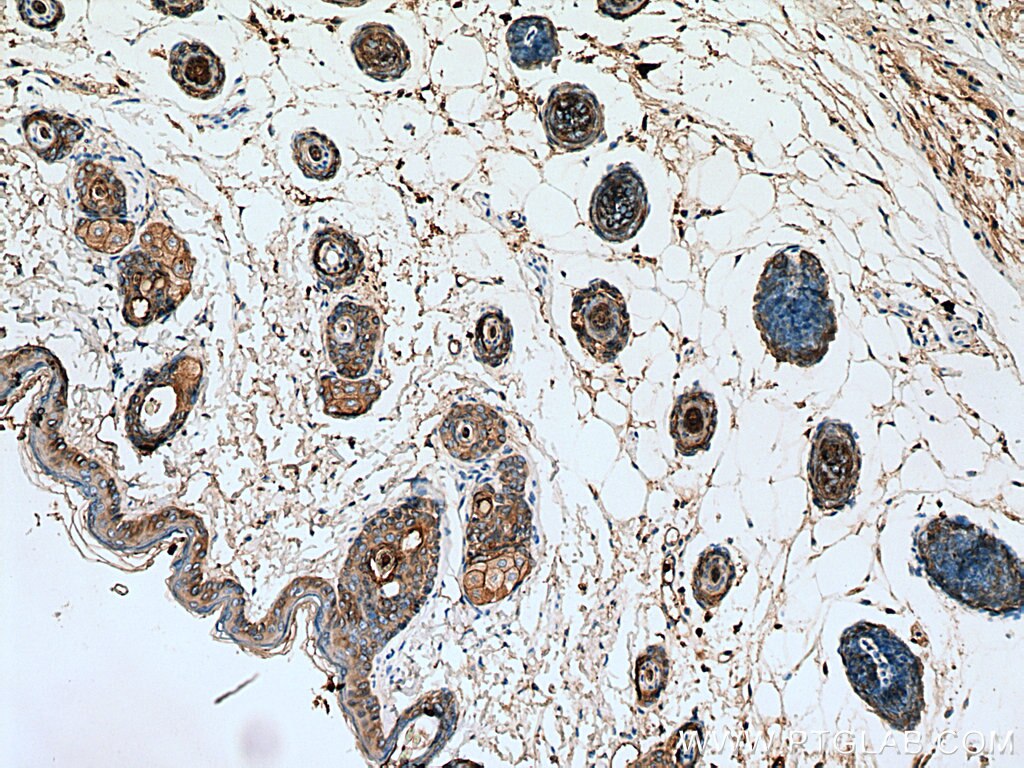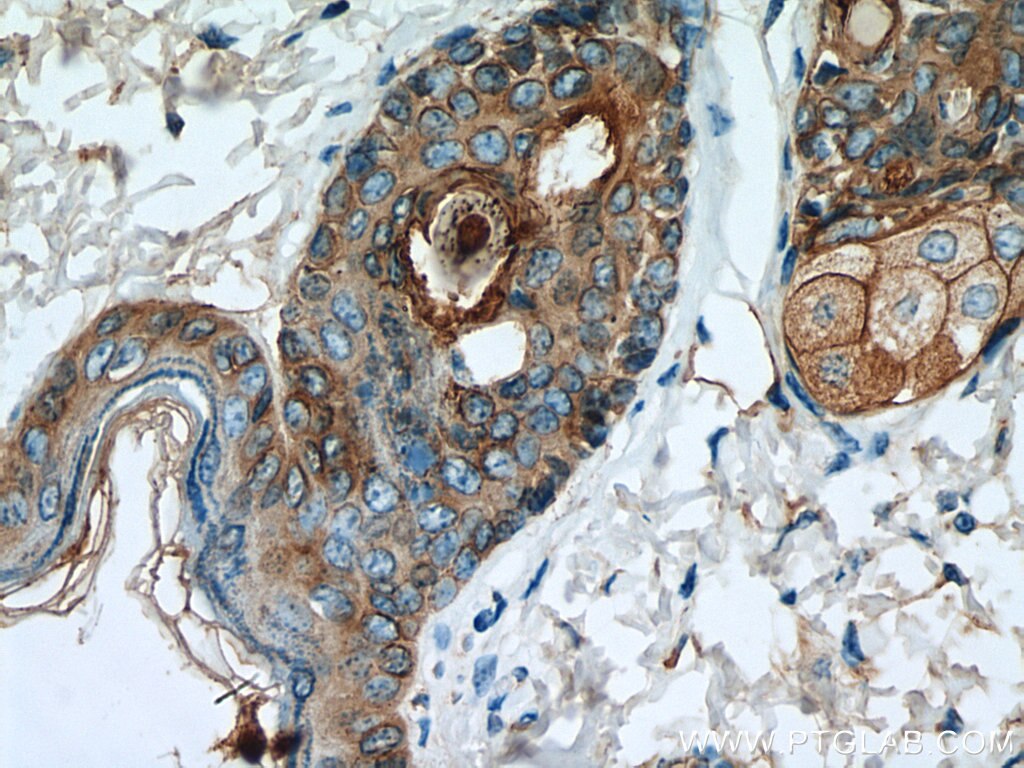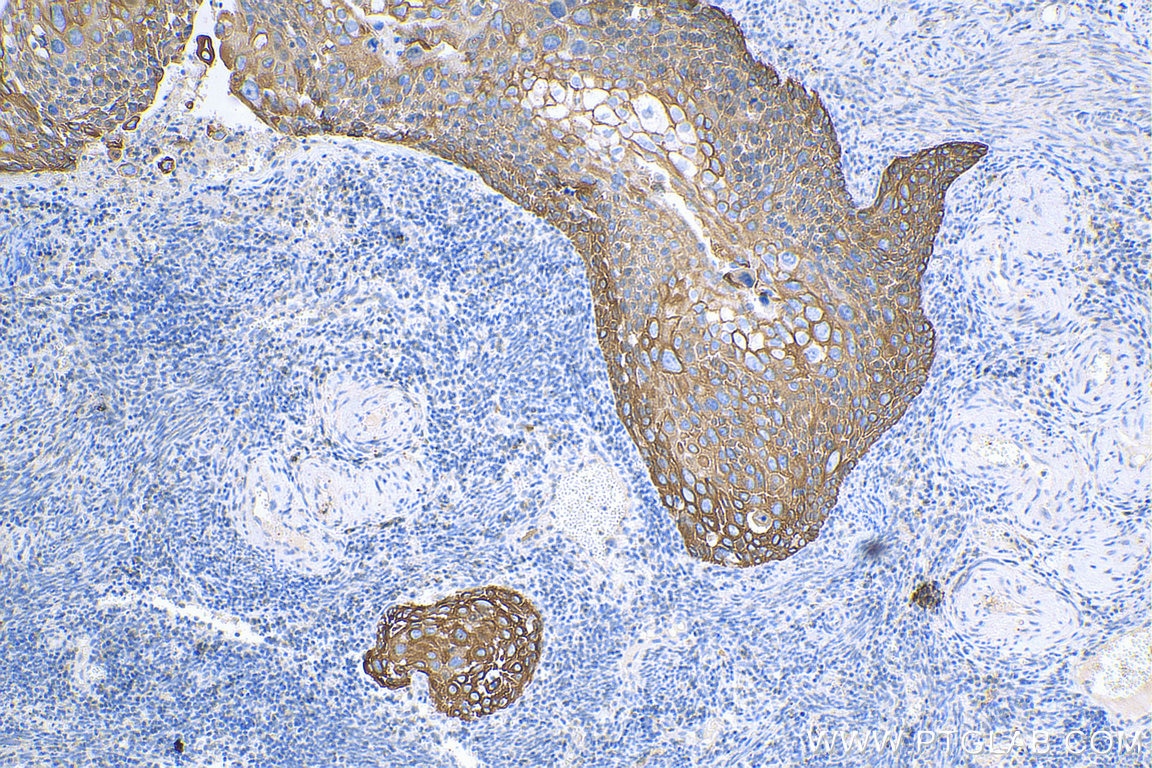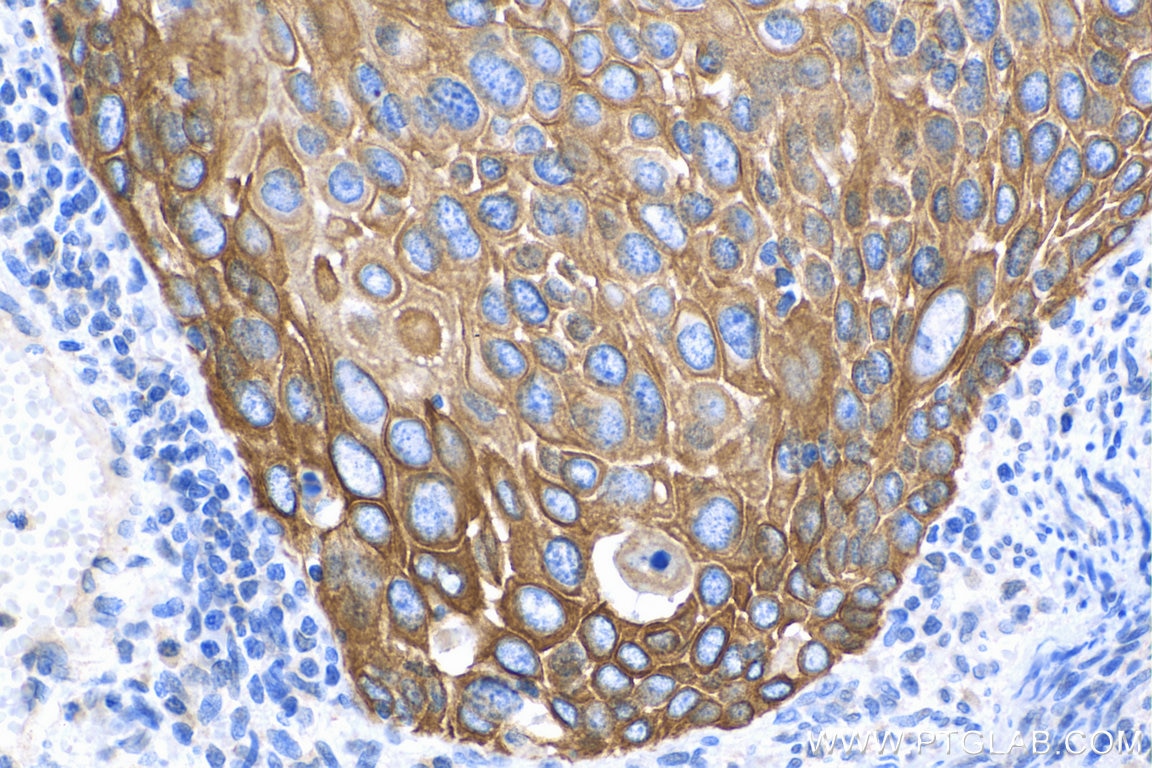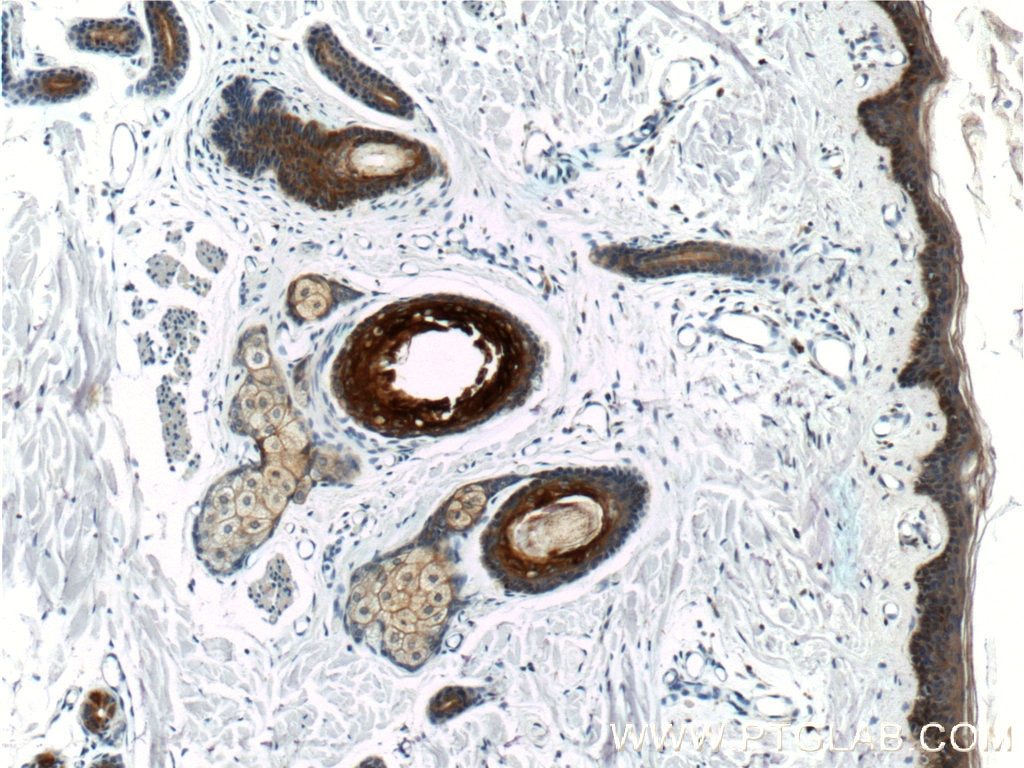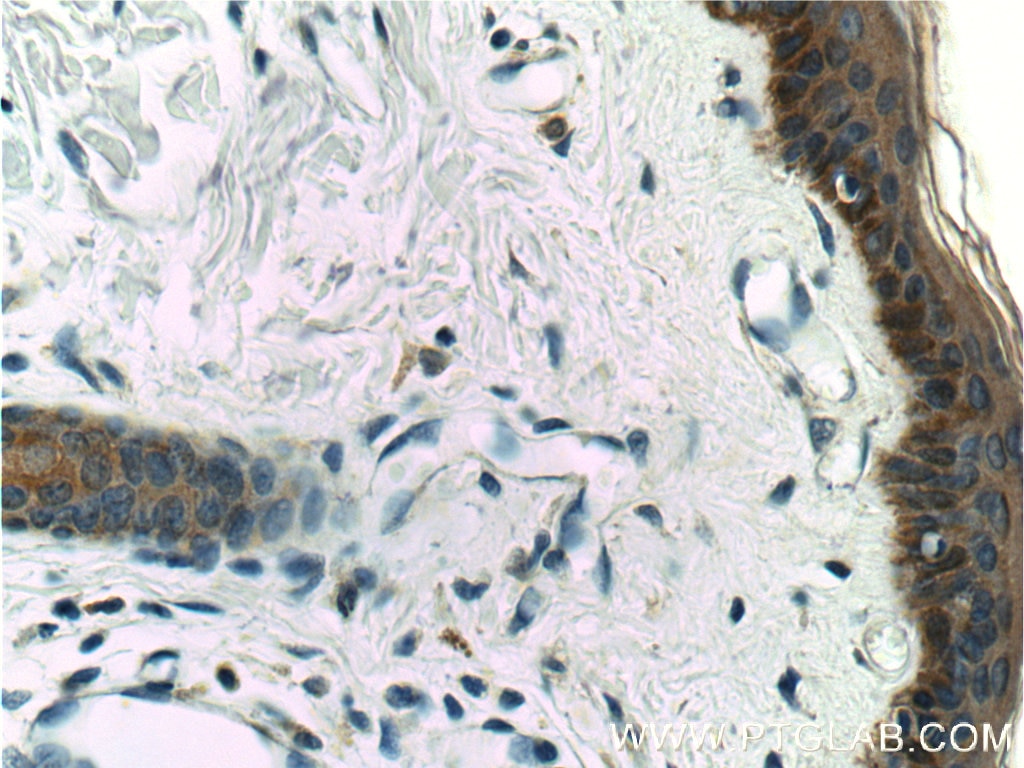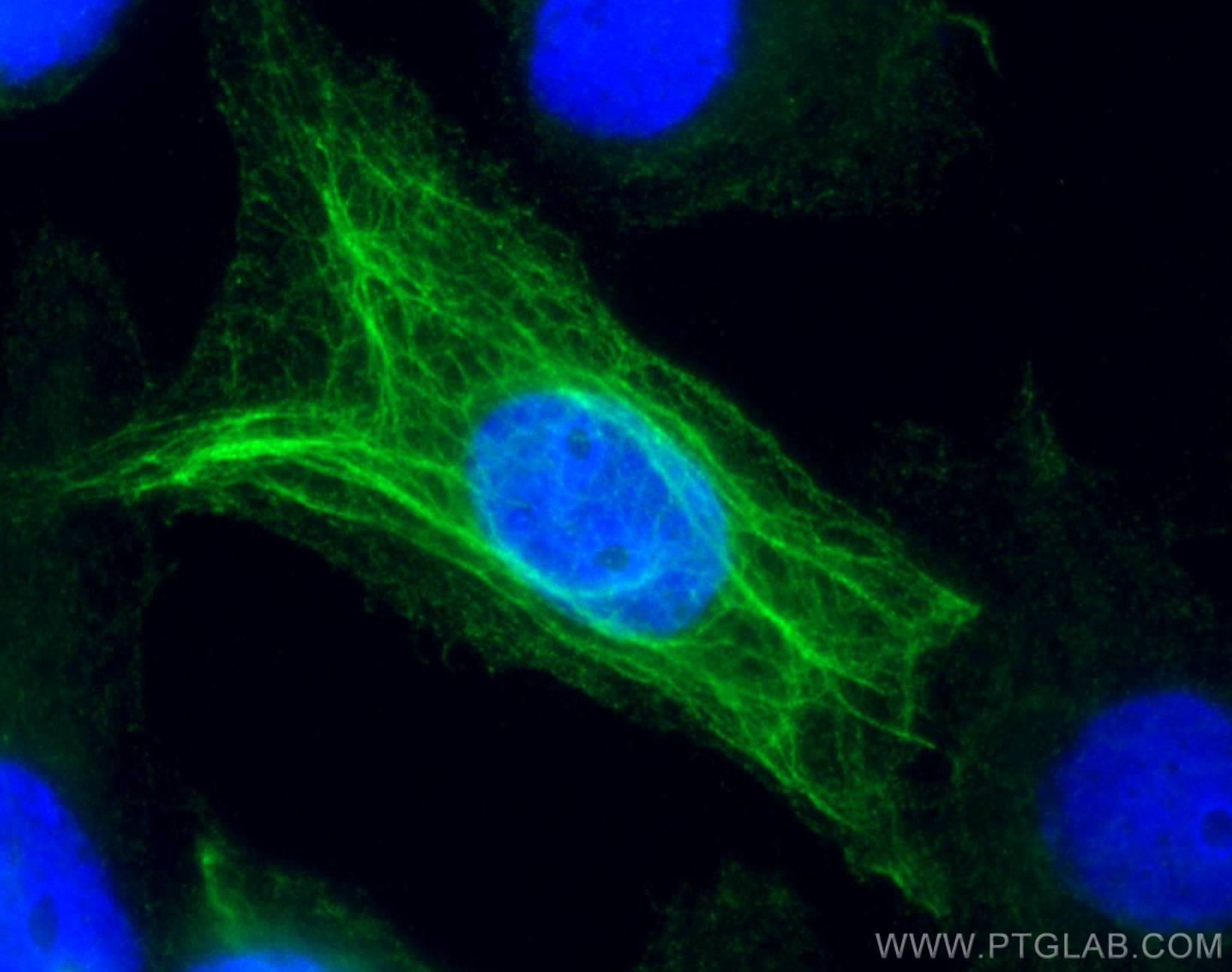Cytokeratin 16 Polyklonaler Antikörper
Cytokeratin 16 Polyklonal Antikörper für WB, IHC, IF/ICC, ELISA
Wirt / Isotyp
Kaninchen / IgG
Getestete Reaktivität
human, Maus
Anwendung
WB, IHC, IF/ICC, ELISA
Konjugation
Unkonjugiert
Kat-Nr. : 17265-1-AP
Synonyme
Geprüfte Anwendungen
| Erfolgreiche Detektion in WB | HeLa-Zellen, A375-Zellen, MCF-7-Zellen |
| Erfolgreiche Detektion in IHC | humanes Ösophaguskarzinomgewebe, humanes Zervixkarzinomgewebe, humanes Hautgewebe, Maushautgewebe Hinweis: Antigendemaskierung mit TE-Puffer pH 9,0 empfohlen. (*) Wahlweise kann die Antigendemaskierung auch mit Citratpuffer pH 6,0 erfolgen. |
| Erfolgreiche Detektion in IF/ICC | A431-Zellen |
Empfohlene Verdünnung
| Anwendung | Verdünnung |
|---|---|
| Western Blot (WB) | WB : 1:5000-1:50000 |
| Immunhistochemie (IHC) | IHC : 1:500-1:2000 |
| Immunfluoreszenz (IF)/ICC | IF/ICC : 1:50-1:500 |
| It is recommended that this reagent should be titrated in each testing system to obtain optimal results. | |
| Sample-dependent, check data in validation data gallery | |
Veröffentlichte Anwendungen
| WB | See 4 publications below |
| IF | See 4 publications below |
Produktinformation
17265-1-AP bindet in WB, IHC, IF/ICC, ELISA Cytokeratin 16 und zeigt Reaktivität mit human, Maus
| Getestete Reaktivität | human, Maus |
| In Publikationen genannte Reaktivität | human, Maus |
| Wirt / Isotyp | Kaninchen / IgG |
| Klonalität | Polyklonal |
| Typ | Antikörper |
| Immunogen | Cytokeratin 16 fusion protein Ag10999 |
| Vollständiger Name | keratin 16 |
| Berechnetes Molekulargewicht | 473 aa, 51 kDa |
| Beobachtetes Molekulargewicht | 48 kDa |
| GenBank-Zugangsnummer | BC039169 |
| Gene symbol | Cytokeratin 16 |
| Gene ID (NCBI) | 3868 |
| Konjugation | Unkonjugiert |
| Form | Liquid |
| Reinigungsmethode | Antigen-Affinitätsreinigung |
| Lagerungspuffer | PBS with 0.02% sodium azide and 50% glycerol |
| Lagerungsbedingungen | Bei -20°C lagern. Nach dem Versand ein Jahr lang stabil Aliquotieren ist bei -20oC Lagerung nicht notwendig. 20ul Größen enthalten 0,1% BSA. |
Hintergrundinformationen
Keratins are a large family of proteins that form the intermediate filament cytoskeleton of epithelial cells, which are classified into two major sequence types. Type I keratins are a group of acidic intermediate filament proteins, including K9-K23, and the hair keratins Ha1-Ha8. Type II keratins are the basic or neutral courterparts to the acidic type I keratins, including K1-K8, and the hair keratins, Hb1-Hb6. Keratin 16 is a type I cytokeratin. It is paired with keratin 6 in a number of epithelial tissues, including nail bed, esophagus, tongue, and hair follicles.
Protokolle
| PRODUKTSPEZIFISCHE PROTOKOLLE | |
|---|---|
| WB protocol for Cytokeratin 16 antibody 17265-1-AP | Protokoll herunterladen |
| IHC protocol for Cytokeratin 16 antibody 17265-1-AP | Protokoll herunterladenl |
| IF protocol for Cytokeratin 16 antibody 17265-1-AP | Protokoll herunterladen |
| STANDARD-PROTOKOLLE | |
|---|---|
| Klicken Sie hier, um unsere Standardprotokolle anzuzeigen |
Publikationen
| Species | Application | Title |
|---|---|---|
Phytother Res Epigallocatechin-3-gallate promotes wound healing response in diabetic mice by activating keratinocytes and promoting re-epithelialization | ||
Int J Clin Exp Pathol Wnt/β-catenin signaling regulates pathogenesis of human middle ear cholesteatoma | ||
Discov Oncol Identification of KRT16 and ANXA10 as cell cycle regulation genes for lung adenocarcinoma based on self-transcriptome sequencing of surgical samples and TCGA public data mining | ||
Invest Ophthalmol Vis Sci Modeling Neuropathic Corneal Pain: Pulled Nerve Approach With Elevated Krt16 Gene Expression | ||
Cell Rep Med Co-targeting BMI1 and MYC to eliminate cancer stem cells in squamous cell carcinoma | ||
Immunity Skin immune-mesenchymal interplay within tertiarylymphoid structures promotes autoimmunepathogenesis in hidradenitis suppurativa |
